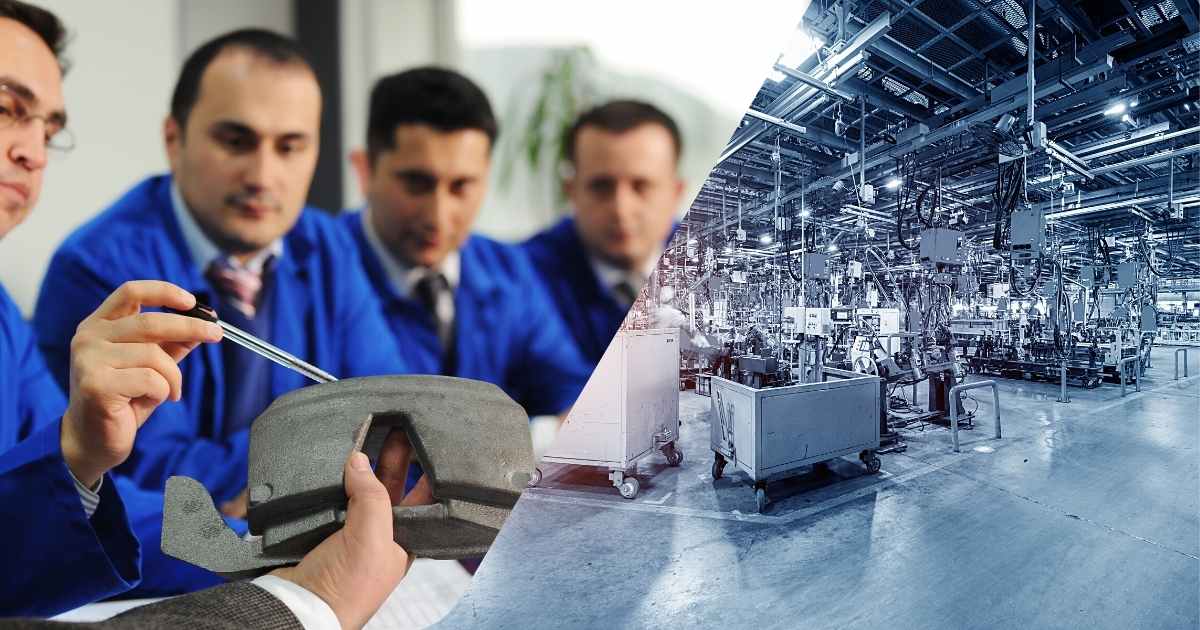
A good manufacturer is good at… running mass productions without unpleasant surprises. That includes the careful validation of the manufacturing & testing processes for new products, good process control, good management of suppliers, and so on.
But it doesn’t necessarily designing the product itself.
I actually recommend that companies avoid relying on a manufacturer excessively. In our guide to new product manufacturing in China, it is “deadly mistake No. 3”.

At the same time, there comes a stage where a manufacturer needs to be involved, needs to give feedback on the feasibility of the product design, and needs to give initial cost estimates. So, where to draw the line? When to plan for the transition, and how to execute it smoothly?
A product development team can keep working for a long time
There are actually three phases if I try and simplify it:
a) Start of design
You don’t want to rush the initial “discovery” phases, when an industrial designer plays with several concepts, or when an engineer tinkers with a few proofs of concept. A bit more exploration can create a lot of value. I wrote before about the concept of “prototesting“.
b) ‘In the thick of it’
When the concept to develop is clear, there may be a lot of engineering design work, and that work can’t be skipped. It’s all about providing clear direction, lining up the right talents, and providing them with what they need to make progress.
The best teams do a lot of that work that will benefit the manufacturer – DFMA, DFQ, preparing some testing jigs, etc.
c) Finalizing the design
When the team gets pretty close to a final prototype, though, the manager needs to know when to pass the whole project onto a manufacturer.
In other words, beware of the natural tendency of product design engineers to keep perfecting the design. For a relatively complex product, it can add months to the timeline.
Note: it is different for firmware for two reasons. First, the manufacturer is usually not involved in this at all. Second, adding manpower to software project that is behind schedule delays it even longer (this is quite well documented).
What is best done by other teams rather than product development?
There are certain tasks that the product development team is probably not best-in-class at:
Qualifying the right component suppliers
This is an obvious one. Suppliers must not only be suitable for the type of work, but they also must be capable of making the product consistently at high quality. Confirming that is not easy for a design team 10,000 miles away from China if manufacturing is to take place there, for example.
Confirming the ease of manufacturing custom-designed parts
This is not easy, either. And I remember cases where some critical component suppliers had been picked, and then all the work had to be done again when the “main supplier” was chosen. It is better to pick a contract manufacturer and involve them in all important supply chain decisions.
Making the final prototype
Usually best done by the manufacturer’s engineering team. It’s a good opportunity for them to get familiar with the product design, to make suggestions for easier manufacturing or more consistent quality, and to start planning for the manufacturing setup.
A product design team often lacks deep expertise in quality and in reliability
I should also mention that they often lack deep expertise in quality and in reliability, too. They often ask themselves the right questions, such as “can this be tested easily”, “is this part likely to break”, or “can this surface treatment look nice consistently”. And that’s half the battle. But it doesn’t take a complex new product all the way to the “ready for manufacturing” stage. Reliability planning and reliability testing, specification sheet drafting, and other such work are often best done by specialized engineers.
Should the transition take place at once?
Yes and no.
On the one hand, you need to focus on signing off on pre-defined deliverables such as “a look-like but not production-intent prototype”, “a fully functional prototype”, “all native design files”, “the engineering BOM“, and so on. And you need to plan to push the design team to hand the files over to the manufacturer.
On the other hand, it is usually advised to set up three parallel tracks, which might look like this:
- Technical – the product development team works in turning a concept into a good prototype, with some input (design reviews) from the manufacturer.
- Supply chain – the manufacturer helps select which suppliers are a good fit for the various parts, where needed, based on the requirements of the designers.
- Quality & reliability – this may be external consultants or someone from the manufacturer’s team. They review the design and prepare quality and reliability plans. They ensure testing starts early enough and they provide feedback to the design team in order to improve the product.
******
Every product development is different. The challenges are not the same. Different design teams, and different manufacturers, have different skills. So, of course, the situation needs to be adjusted. But, in most cases, about 90% of the advice in this article probably holds true, for mechanical and/or electronic products.
